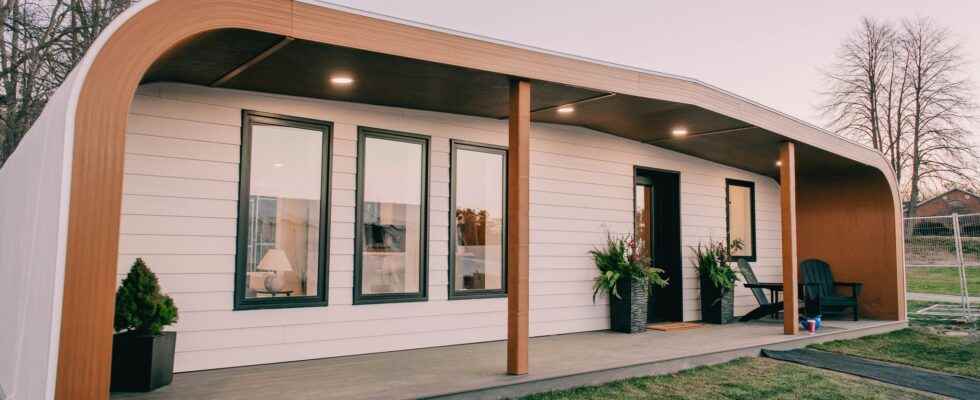Researchers at the University of Maine have 3D printed a completely recyclable house made of natural materials. And it only took a few hours to bring it to life.
Several countries and regions of the world are hit by a shortage of housing, but also of manpower, which is pushing scientists around the world to rack their brains to find life-saving solutions. Researchers at the University of Maine (at the northeastern tip of the United States) may have found a way to contain this thorny problem. Build 3D houses? Yes, but it’s not necessarily a novelty anymore, and it’s even a trend. Where they shine is that rather than using concrete or other traditional materials, they are going to use natural and recyclable materials.
A 100% recyclable house
BioHome3D, that’s its name, is the first house built entirely from so-called biosourced materials. Although it is only a prototype, the result is promising, both visually and from an environmental point of view.
Researchers from the Advanced Structures and Composites Center (ASCC) at the University of Maine have therefore built this 56 m² house using 3D printing. Its floor, walls and roof have been printed in wood fiber of natural origin and bio-based resin, which means that the BioHome3D is 100% recyclable and guarantees completely natural insulation.
Construction waste has been almost completely eliminated thanks to the insolent precision of the printing process.
Assembly in less than half a day
The house was printed in separate modules, 4 in total, which then had to be moved to the assembly location to assemble the whole thing. And that’s obviously where the magic of 3D printing happens. It only took half a day to assemble the modules, then only 2 hours to connect the house to the electrical network by a single electrician. Saving time, responding to the shortage of manpower: the advantages are not lacking.
” Many technologies are being developed to 3D print homes, but unlike BioHome3D, most are printed with concrete “recalls the director general of the ASCC, Habib Dagher, who salutes the particularly low environmental impact of the prototype.
The construction of the house makes it possible to do without cement, a key element in the manufacture of concrete, whose carbon footprint is very important. According to the Chatham House think tank, cement accounts for 8% of global CO emissions2.
” Unlike existing technologies, the entire BioHome3D has been printed, including the floors, walls and roof. The biomaterials used are 100% recyclable, so our great-grandchildren will be able to fully recycle BioHome3D adds the researcher. An environmental victory, therefore. The house will also be equipped with sensors, particularly thermal ones, to study its behavior and performance during the winter.
Source : The University of Maine

16